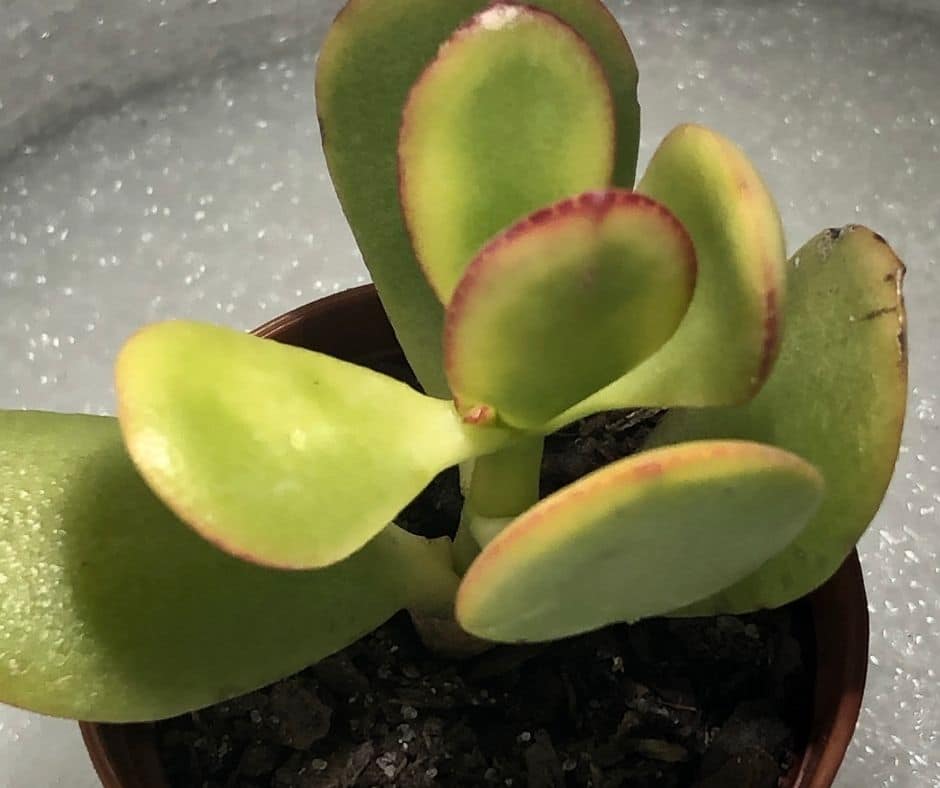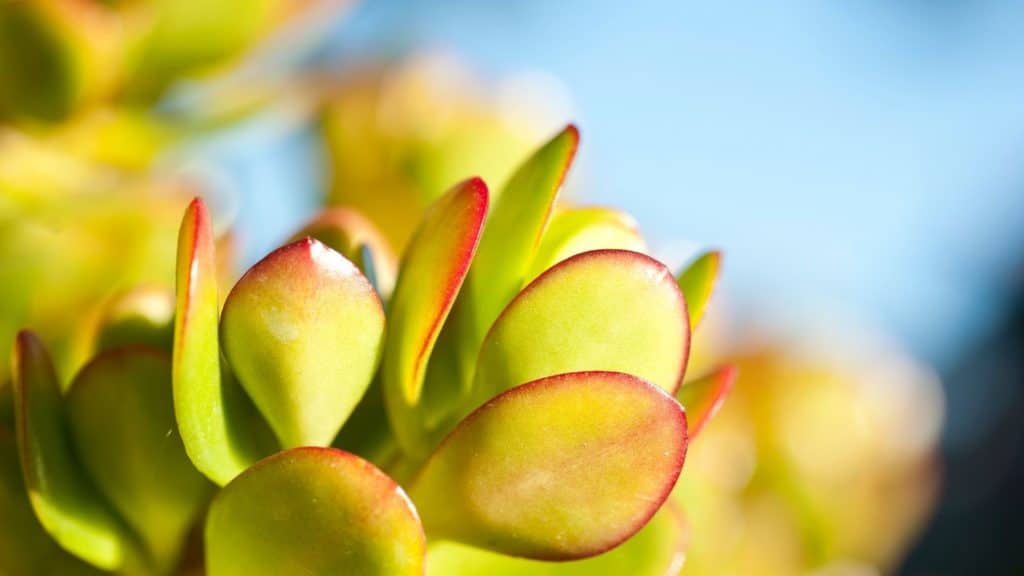
Jade plants (Crassula ovata) are one of the most popular types of succulents in the world. They’re easy to care for, don’t need much light or water, and can adapt to just about any environment.
Jade plant propagation is a fairly simple process that will help you create more jade plants without having to buy them from a nursery. Follow these steps for successful jade plant propagation!
1) Pick your propagating medium- Succulent cuttings root best when they are planted in media with good drainage like perlite or sand. You can also use regular potting soil if it has been sterilized by boiling it first (follow instructions on package).
2) Cut off leaves below the second node.
-A plant cutting consists of a stem section with leaves attached to the petiole (leaf stalk) so they can create new roots when planted in soil.
What is Plant Propagation?
Plant propagation is the process of taking plant cuttings or parts and using them to create new plants. You can propagate the jade plant by planting a cutting, division, leaf-bud cutting, stem section, root division, or even seeds.
This article will focus on how to plant jade plant pieces in soil with minimal effort for successful jade plant propagation.
What Will I Need?
Soil: Jade plant roots need well-draining soil that’s rich in organic matter like composted bark mulch. Avoid potting mix because it contains sand which doesn’t help retain water enough for proper plant growth.
Pot size: You want your jade plant container to be at least four inches deep and wide so there’s plenty of soil for plant roots to grow.
Plant container: Jade plant propagation requires a sunny location or bright filtered light so make sure your plant is near windows where it can get enough sunlight during the day.
Cutting tool: You’ll need some sort of sharp cutting device like scissors, garden shears, a sterilized knife, etc.
Rooting hormone (optional): Rooting hormone helps stimulate root growth on cuttings and will help increase the chances that your new plantlets survive transplanting into their own pot.
Rooting Hormone Instructions
If you choose to use rooting hormone rather than follow these easy steps before planting any part of your jade plant in soil, sterilize whatever tool you plan on using with rubbing alcohol or a flame.
Clean your jade plant cutting and the tools with water mixed with a little bit of household bleach (be sure to thoroughly rinse everything!)
Mix up your rooting hormone by following manufacturer instructions or using this easy formula: use one part powder and two parts liquid for every one part soil.
For example, if you’re mixing up enough hormone to plant five cuttings, then mix ½ cup rooting mixture into ¼ cup of tap water in a spray bottle. Use pure sand as an alternative to planting hormones because its sterile nature helps promote root growth.
How To Propagate Jade Plants From Leaves
The easiest way to propagate jade plants is from leaves that have fallen off naturally over time.
If you want even more jade plant cuttings, plant more than one leaf cutting in the soil. Jade plant leaves are easy to propagate because they don’t have any stems or roots. However, make sure your jade plant leaf has an intact petiole (the stem that attaches the leaf to the main plant) before planting it in soil otherwise you won’t be able to successfully grow a new jade plant from your leaf.
What To Do With Leaf Cuttings
To start propagating jade plants with their own leaves follow these simple steps:
- Choose healthy looking jade plant leaves and remove them gently from the mother plant using sharp scissors or clippers, taking care not to drop them since once removed they will die within 24 hours.
- Plant each leaf in soil, making sure the petiole is buried at least one inch below soil level for stability.
- Keep plant leaves in partial to full shade and provide them with enough water to keep moist but not soggy since jade plant propagation needs well draining soil.

How To Propagate Jade Plants From Stems And Branches
Propagating jade plants from stems or branches can be tricky because you need to cut off small sections of the plant trunk without removing any roots.
However, if done properly this method will help create new jade plant cuttings that are genetically identical replicas of their parent plant. It’s also a great way to save overgrown mother plants while creating more live plants.
What You Need To Do
Choose healthy jade plant stems or branches that are between three to six inches long and have at least one leaf node.
Remove any dead leaves, but leave the plant’s tiny buds intact since cutting off plant leaves slows down your propagation effort.
Prepare potting soil by mixing two parts composted bark mulch with one part perlite.
The best time to propagate jade plants is springtime when they start growing new stems because it helps promote root growth on stem cuttings during warmer weather conditions.
Place your cutting in a sunny location near windows where there’s plenty of indirect sunlight for about six hours every day. Keep plant soil moist but not soggy, so don’t water if you notice excess condensation inside plant pots.
Tips To Help Your Jade Plant Propagation Effort Succeed
Plant several jade plant cuttings in small pots and increase watering as plantlets grow. Repot mother plants yearly to make sure they don’t become root-bound.
If you notice any yellowing leaves, decrease sunlight exposure, reduce fertilizer application and remove those leaves immediately since your cutting won’t survive if there’s no food available for growth.
How To Care For Newly-Sprouted Rootlings (Jade Plants)
Just because the tiny plantlets sprout doesn’t mean that you’re done with all of your care instructions yet… you still need to provide them with enough water so their soil remains moist but not soggy.
During hot weather, plant leaves require around four hours of direct sunlight exposure every day. Use a low nitrogen fertilizer like 20-20-20 with micronutrients to fertilize jade plant cuttings monthly. You can also use bone meal or composted manure instead.
Jade Plant Propagation FAQs:
What Is This “hormone” Called That You Mention?
There is no such thing as one universal plant hormone that’s used for all types of plant propagation. However, if you want to go the organic route there are several options available including using liquid seaweed extract (Ascophyllum nodosom), which can be found in any garden center.
Commercial rooting hormones come from natural plant sources and they’re created by extracting plant hormones called cytokinins, auxin, and gibberellic acid that are responsible for stimulating plant root growth.
What Is The Difference Between Leaf Cuttings And Stem Cutting?
A leaf cutting is exactly what it sounds like; a portion of a plant stem with one or more leaves attached to the petiole (leaf stalk) so they can create new roots when planted in soil.
Planting stems directly into the soil would only damage them since there’s not enough space between nodes to allow plant roots room to grow properly.
How Often Do I Need To Water Jade Plants After Propagation?
Newly-sprouted jade plants need around four hours of bright sunlight every day, but their watering requires some attention because you don’t want plant soil to become soggy and damp.
Check plant pots daily by poking your finger about one inch into the dirt. If it feels dry, then water. If you notice condensation build-up inside the plant pot, increase watering frequency until the soil is moist but not saturated.
What Type Of Soil Should I Use To Propagate Jade Plants?
You can use any type of commercial propagating mix or a homemade mixture that consists of two parts composted bark mulch with one part perlite.
Make sure plant cuttings are planted in an appropriate-sized container that’s between six inches and 12 inches deep so they’ll have enough room for root growth after planting jade cutting stems directly into the soil.
The best choice would be a plant pot that has a bottom drain hole and it’s best to plant cuttings in small or individual pots.
How Deep Should I Plant Jade Plant Cutting Stems?
There is no such thing as one universal jade plant propagation technique because there are several ways you can propagate plant stems on your own. Just make sure the soil level remains at about half an inch below the top of the container so none of the stem cutting surfaces get buried under loose dirt.
